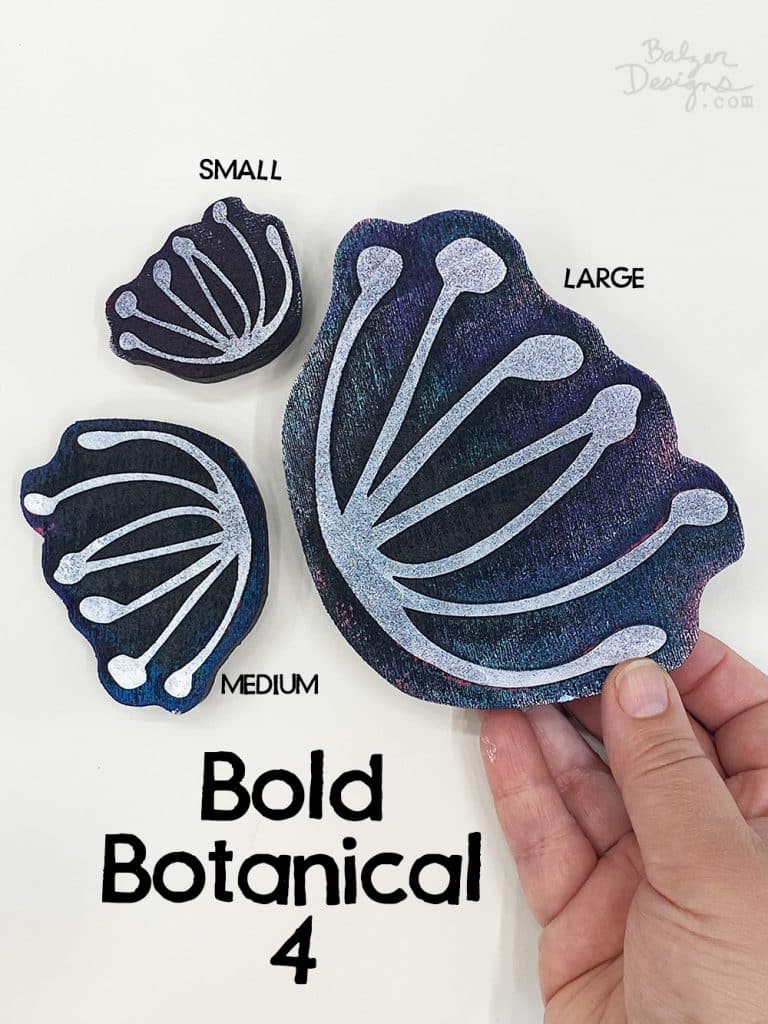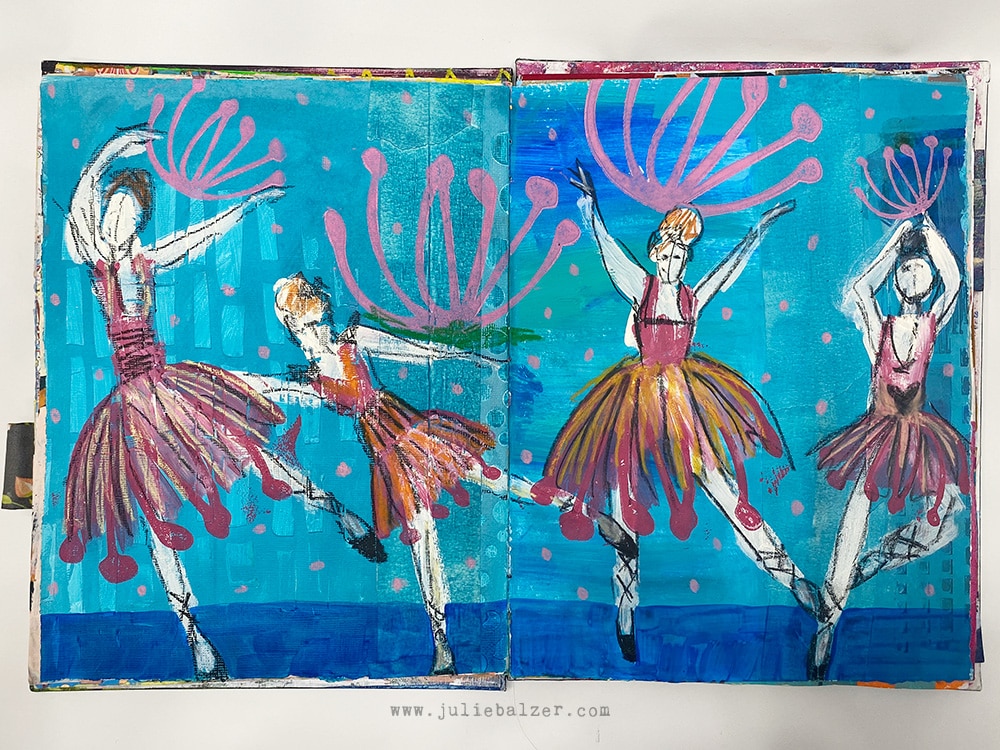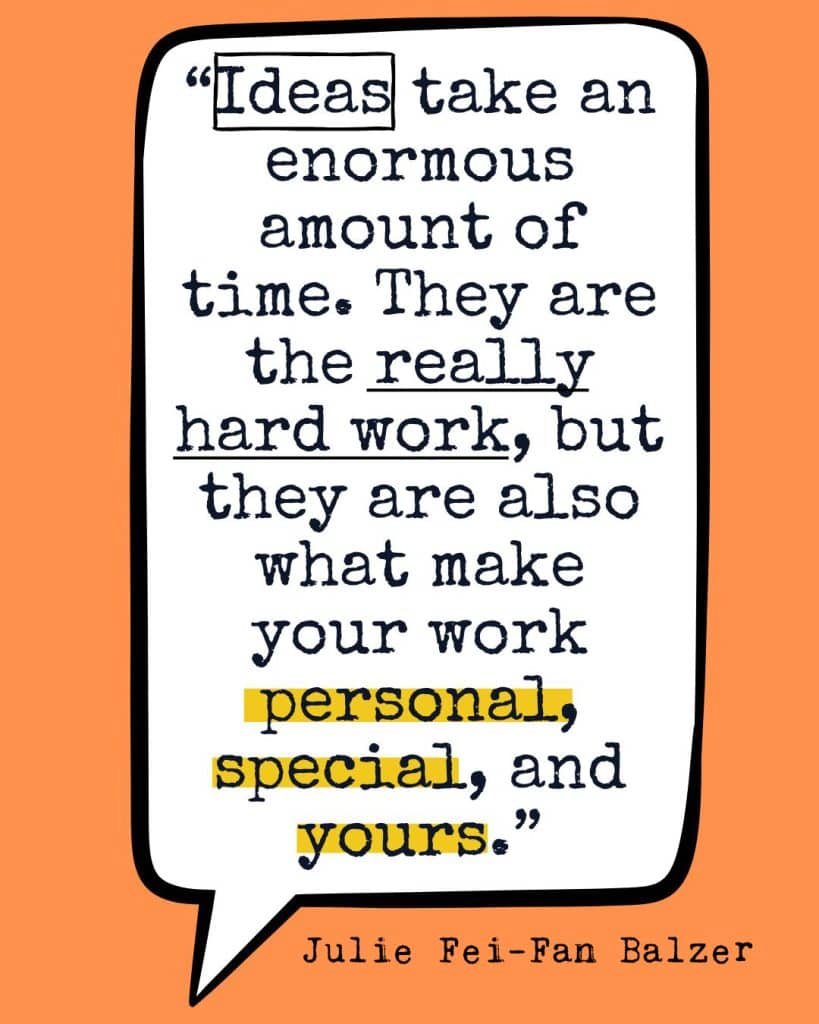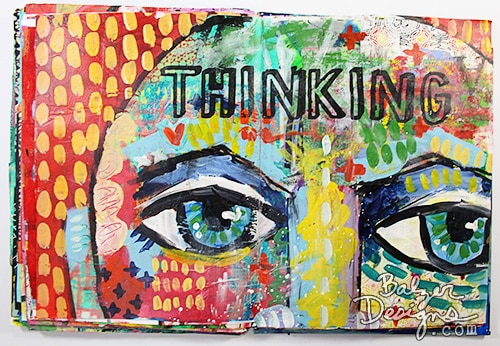When we talk about art, it’s easy to get caught up in technical skills such as technique, accuracy, composition. As important as those things are, the real magic of art – the heart of art – is about ideas. It’s about expression, experimentation, and seeing beyond what’s obvious. That mindset is exactly what led me to turn a simple foam stamp into a troupe of whimsical dancers.
From Flower to Dancer: Seeing Beyond the Stamp
I originally designed this foam stamp as a flower for Art Foamies.

But the more I looked at it, the more it reminded me of a flowing skirt. That tiny spark of an idea—“What if it’s not just a flower?”—turned into a full spread in my art journal: stick figure ballerinas brought to life through layering, stamping, and imagination.

This wasn’t about getting the anatomy right or the composition perfect. It was about letting the idea lead and following it wherever it led.
Why Ideas Matter More Than Perfection
Anyone can learn technique. You can train your hand to render, shade, and compose. But coming up with original ideas? That’s the real magic of being an artist.

We often judge art based on technical execution, but I believe:
- A messy, idea-driven piece is more powerful and interesting than a perfectly executed but empty piece.
- Thinking is a key part of any artistic practice.
- A huge part of being an artist is feeding your need for ideas. You must actively read, travel, view, listen, and find myriad ways to stimulate your mind.
- Ideas are what make you different and unique from the artist standing next to you.
- When you have ideas, you never run out of art juice.
Do you agree or disagree? Let me know in the comments!
P.S. You might like this blog post about ways to generate ideas for art.
Quotable Quotes
Here are a few wise words (if I do say so myself) to remember from the video. I’ve also give you some takeaways or actions that you can do today.
- “Focus on the ideas. Ideas are harder to come by.”
- Meaning: Technical skill can be developed over time, but original ideas are the core of creative work.
- Takeaway: Instead of worrying about perfect lines, spend 5–10 minutes brainstorming before you start creating.
- “Lots of people can learn how to render things perfectly. That just takes time and practice. But having ideas — that is really special and unique.”
- Meaning: Anyone can train their eye and hand, but what makes your work stand out is your unique vision.
- Takeaway: Keep an “Idea Sketchbook” where you capture wild concepts, dreams, or alternate interpretations of everyday objects—no drawing required. Writing is a valid and useful part of any sketchbook practice.
- “Art is communication. So are these perfectly rendered Degas ballerinas? No. But do they read as figures and convey movement? Absolutely.”
- Meaning: Your art doesn’t need to be technically flawless to successfully communicate feeling or story.
- Takeaway: Challenge yourself to create a simple piece using just gesture lines or abstract shapes to tell a story—focus on mood, not perfection.
- “We have to give ourselves permission to explore ideas visually without constricting ourselves by essentially what is grammar.”
- Meaning: Similar to writing, you don’t need perfect “grammar” in art to communicate a meaningful message.
- Takeaway: If you don’t know how to use a particular tool or medium, just start trying. Along the way you’ll learn and improve. You an always take a class or get coaching for help. But don’t limit yourself. Fake it until you make it!
- “This is what is so exciting about an art practice — letting yourself go to unexpected places and seeing things for more than what they are.”
- Meaning: Growth happens when you’re open to surprise and reinterpretation in your work.
- Takeaway: Pick one object (like a stamp, brush, or collage element) and brainstorm five different ways it could be used. Then make something based on your weirdest idea.
A Final Thought: What Else Could It Be?
The next time you reach for a tool—whether it’s a foam stamp, a piece of collage paper, or a tube of paint—pause and ask yourself: What else could this be?!

That question is the beginning of an idea. And, as we’ve discussed, ideas are where art begins!
Thanks for stopping by!



